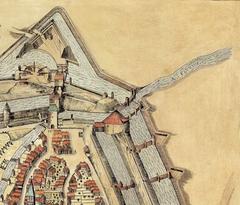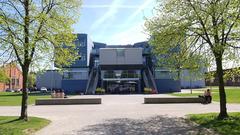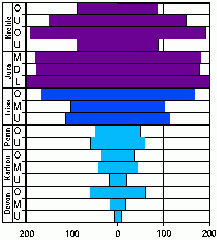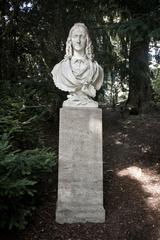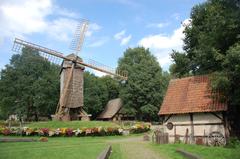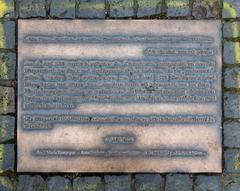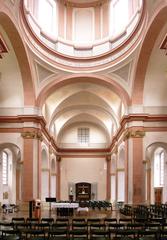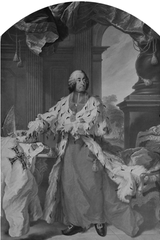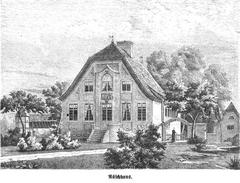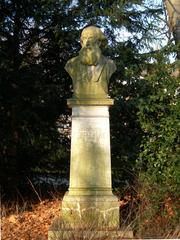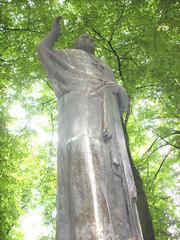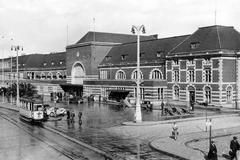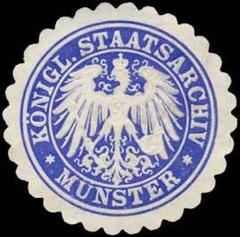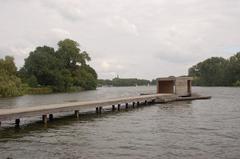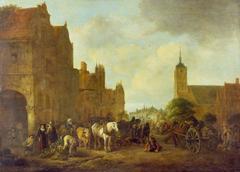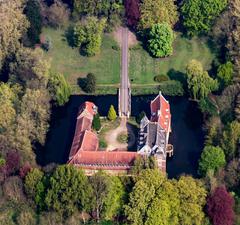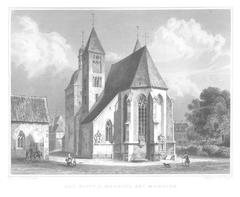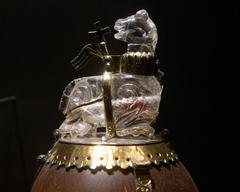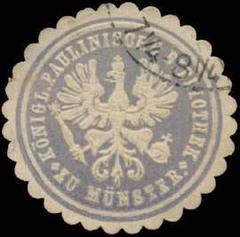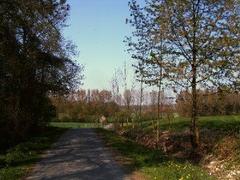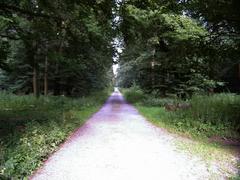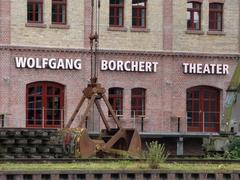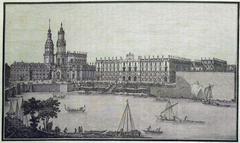
Zwinger Visiting Guide: Hours, Tickets, and Tips
Date: 01/08/2024
Introduction
The Zwinger in Münster, Germany, stands as a monument that encapsulates the city’s rich and turbulent history. Originally constructed in the 16th century as part of Münster’s defensive fortifications, this remarkable structure has borne witness to significant historical events, including the Anabaptist Rebellion and the atrocities of the Nazi era. Today, the Zwinger serves not only as a poignant memorial but also as a vibrant cultural venue, making it an essential destination for visitors interested in history, architecture, and culture (Wikipedia). This comprehensive guide aims to provide you with detailed information on the Zwinger’s history, visiting hours, ticket prices, and its cultural significance, ensuring you have all the knowledge you need for a meaningful visit.
Table of Contents
- Introduction
- History of the Zwinger
- Visitor Information
- Cultural Significance
- FAQ Section
- Conclusion
History of the Zwinger
Early Construction and Architectural Features
The Zwinger in Münster began construction around 1528 as part of the city’s defensive fortifications. Situated at the site of the old northeast tower, financial records from 1532 reference a “grothes Bollwerck” in the area between Neubrücken- and Hörstertor. The Zwinger is a rondel with a diameter of 24.3 meters, boasting an outer wall thickness of approximately 1.95 meters, though it might have been as thick as 4.64 meters originally.
Role During the Anabaptist Rebellion
The Zwinger played a crucial role during the Anabaptist Rebellion of 1534-1535 when the Anabaptists took control of Münster. This period led to the destruction of many city archives, leaving the earlier documented history of the Zwinger sparse.
Transition and Restoration
In 1541, the Zwinger was returned to Münster by Prince-Bishop Franz von Waldeck, ceasing its function as a zwingburg and focusing on city defense. By 1539, control had shifted to the city and local estates, who took over the costs of maintaining the stationed soldiers.
The Zwinger During the Nazi Era
The Zwinger was repurposed as a prison and execution site by the Gestapo during the Nazi era, marking a dark chapter in its history. Allied bombing raids during World War II caused significant damage, leading to restoration efforts post-war (Wikipedia).
Post-War Restoration and Memorialization
After World War II, the Zwinger was transformed into a memorial, becoming part of the Stadtmuseum Münster. It houses the sculpture “Das gegenläufige Konzert,” symbolizing reflection and remembrance (Wikipedia).
Visitor Information
Ticket Prices
Admission to the Zwinger is free, making it an accessible destination for all visitors.
Opening Hours
The Zwinger is open to the public from April to October. Guided tours are available on the first Sunday of each month, and the site is open on Sunday afternoons from June to September. Evening flashlight tours are also offered monthly (Münsterland).
Guided Tours
Guided tours start at the Stadtmuseum Münster and include an audio-visual presentation on the Zwinger’s history. These tours provide an in-depth look at the site’s historical and cultural significance (Münsterland).
Special Events
Since 2021, the artist collective Bauer/König/Kücking has projected a large-scale video installation titled “Maßnahmen zur Verteidigung der Demokratie” onto the Zwinger’s exterior walls each autumn, enhancing its role as a cultural venue (Münsterland).
Accessibility
The Zwinger is accessible to visitors with mobility issues, ensuring everyone can explore its historical and cultural offerings (Münsterland).
Cultural Significance
Currently, the Zwinger serves as a poignant memorial and cultural venue. It hosts events and installations that reflect its historical significance and modern relevance, maintaining its status as an important site in Münster (Traces of War).
FAQ Section
What are the Zwinger’s opening hours?
The Zwinger is open from April to October, with additional visiting hours on Sunday afternoons from June to September.
How much are tickets to the Zwinger?
Admission to the Zwinger is free.
Are there guided tours available?
Yes, guided tours are available on the first Sunday of each month and include an audio-visual presentation.
Is the Zwinger accessible?
Yes, the Zwinger is accessible to visitors with mobility issues.
Conclusion
The Zwinger in Münster stands as a testament to the city’s rich history and cultural heritage. From its origins as a defensive bulwark to its role in the Anabaptist Rebellion and its transformation into a memorial, the Zwinger offers visitors a chance to reflect on its storied past. Plan your visit today to explore this unique historical site. For the most current information on opening hours and special events, visit the Zwinger’s official website (Münsterland). Don’t forget to explore nearby historical sites and immerse yourself in the rich cultural tapestry that Münster has to offer.
References
- Wikipedia, 2024, Zwinger (Münster) source url
- Traces of War, 2024, Zwinger Prison Münster source url
- Münsterland, 2024, Events in Münster source url
- GPSmyCity, 2024, Zwinger source url
